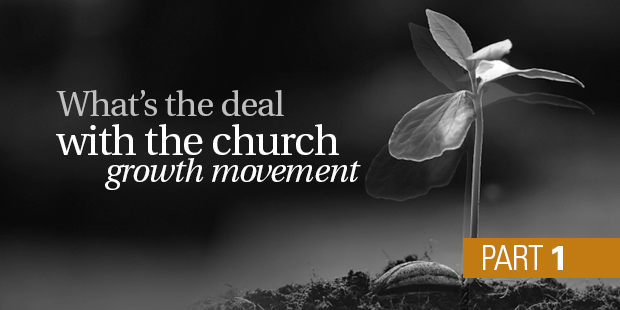
What’s the Deal with the Church Growth Movement, Part 1
Today, I begin a blog series that takes a closer look at the Church Growth Movement. Our approach to church today has been shaped by this movement whether we are conscious of it or not. Good and bad have evolved from the early days. By taking a closer look at the movement I hope we can learn and become more focused on lostness issues in America. So where were the thoughts and dreams of the early voices in the Church Growth Movement?
Now, church growth (as attendance) is not the same as Church Growth (as a movement). Most people would be in favor of growing a church, but Church Growth has become controversial (see the Google search on the movement to see how many links are to critiques).
So, what is Church Growth (when using capital letters). The American Society of Church Growth (now the Great Commission Research Network) defines it as:
Church growth is that discipline which investigates the nature, function, and health of Christian churches, as they relate to the effective implementation of the Lord’s Great Commission to make disciples of all peoples (Mt. 28:19-20). It is a spiritual conviction, yet it is practical, combining the eternal principles of God’s Word with the practical insights of social and behavioral sciences.
Over the next few weeks, I want to talk a look at the movement, starting with the person widely seen as the founder of the movement.
Donald McGavran, was a missiologist and third generation missionary born in India. He is universally considered the father of the Church Growth Movement. He was, interestingly, a missiologist and that was related to his emphasis.
As a missiolgist, when he suggested the need to transition our strategy from “people” to “peoples” in his work Bridges of God in 1954, it impacted his views (and the Church Growth Movement) in big ways. His study of groups (or peoples) on how they respond, undergirded the movement’s emphasis on statistics, sociology, analysis, and more.
Let me say that I am a fan of Donald McGavran. We may learn more by understanding what McGavran was not saying, particularly from the beginning. For example, McGavran took on the most popular, long standing approach to international missions and evangelism. He declared the “mission station approach,” that had existed for over 150 years, was ineffective for reaching the masses. He determined that by measurement– he analyzed and came to statistical conclusions that undergirded his missiological decisions that led to the Church Growth Movement.
For background, the mission station approach encouraged new converts to leave their tribe and isolate themselves. They took advantage of Western churches, hospitals, and schools (goods and services) established on international mission fields. He did not deny the positive outcomes through this approach but called for a “new pattern” when it comes to results (peoples being converted to Christ):
A new pattern is at hand, which, while new, is as old as the Church itself. It is a God-designed pattern by which not ones but thousands will acknowledge Christ as Lord, and grow into full discipleship as people after people, clan after clan, tribe after tribe and community after community are claimed for and nurtured in the Christian faith.(Bridges of God 331,332). Other names that shaped the early thinking of the church growth movement included Win Arn and C. Peter Wagner. (More on them, particularly Wagner, later and how they altered the direction of the movement.)
But, before discussing these leaders and the movement, it’s important to understand the heart of what they were thinking. In moving the Church Growth lens to the West, they wrestled with the question: “How do we reach peoples (as opposed to a few random individuals) with the gospel in the U.S.?” Church growth thinkers, simply put, were trying to answer the question a different way in light of the struggles of churches in the West.
Some people I know would respond to the question of our missionary ineffectiveness with “Well, you don’t need to worry about that. Just read the Bible and preach the gospel, and leave the results up to God.” But that response is, in my view, not the best.
What if you were to take two missionaries and send them to the Pokot in Africa? Then you told one of them, “Preach the gospel, love people, but learn the culture. Learn how the people work, think, live, and speak.” Then you say to the other missionary, “Listen, just preach the gospel and love people.” You would find very different results between the two missionaries don’t you think? Both of them preached the gospel and loved people, but they engaged their culture on different levels.
McGavran’s challenge was to dig into existing relational networks. Do not encourage believers to isolate themselves from their greatest place of Gospel influence– their family and neighbors. That was a missiology question and it assumes that missiology (with its research, sociology, and cultural understanding) has some value.
Obviously, I think there is much we can learn from the Church Growth Movement. However, in my next post I will talk about three unfortunate outcomes of Church Growth thinking.
Read Part 2 of this series here.
Read more from Ed here.

Tags: Church Growth, Ed Stetzer, Vision Frame













